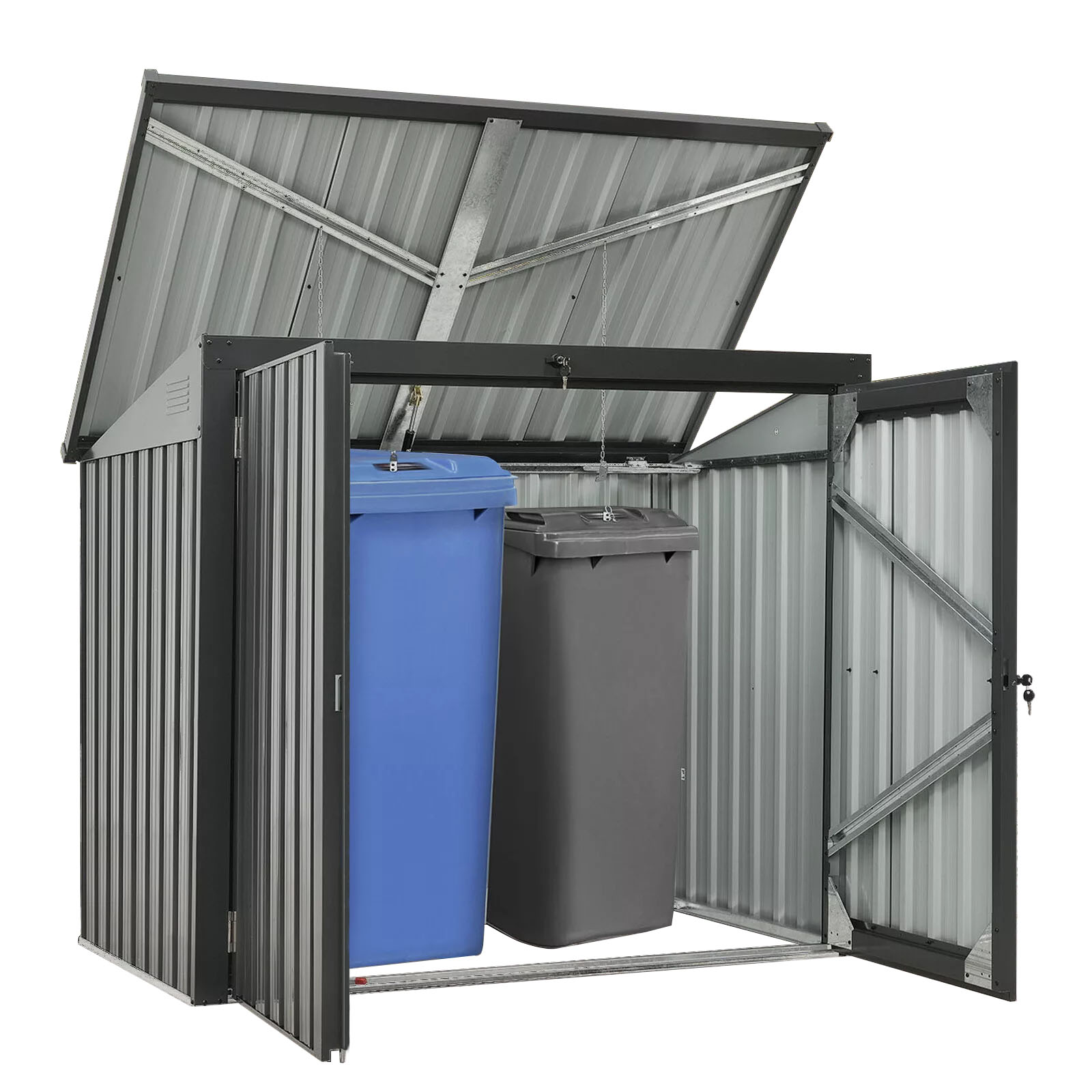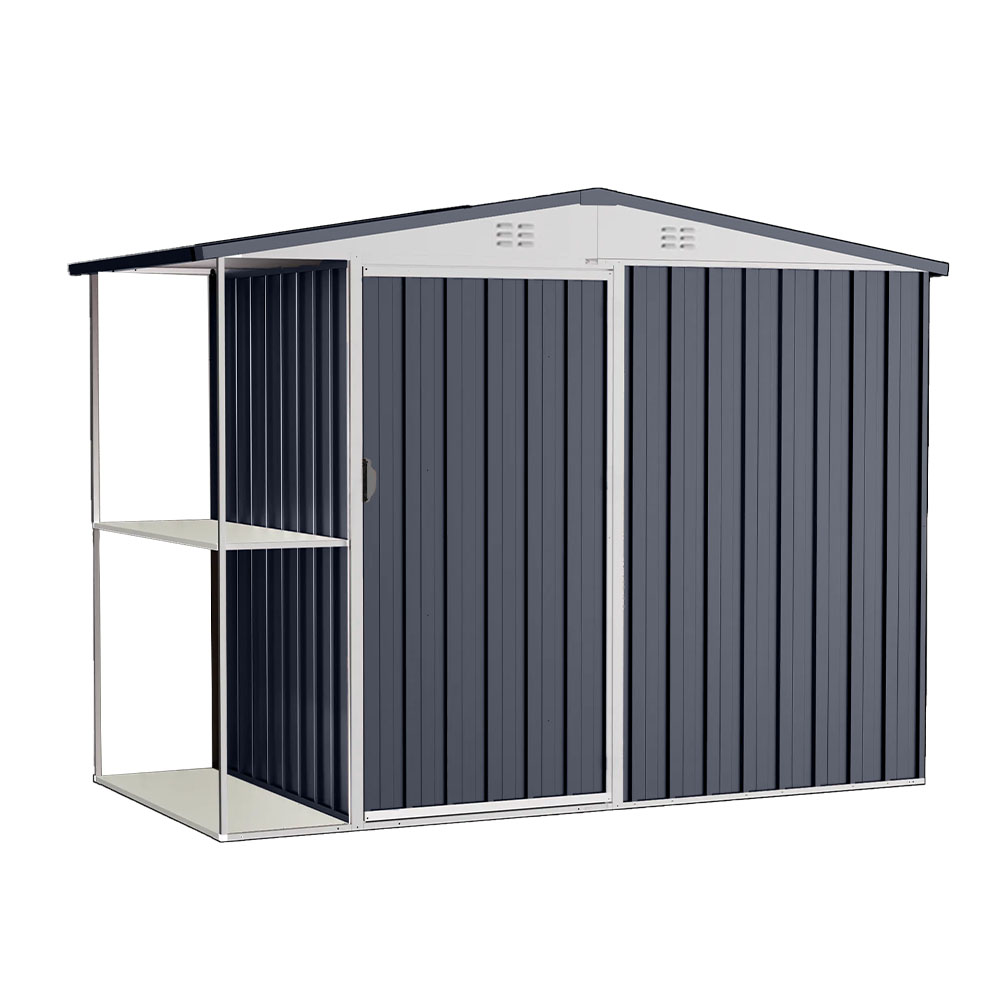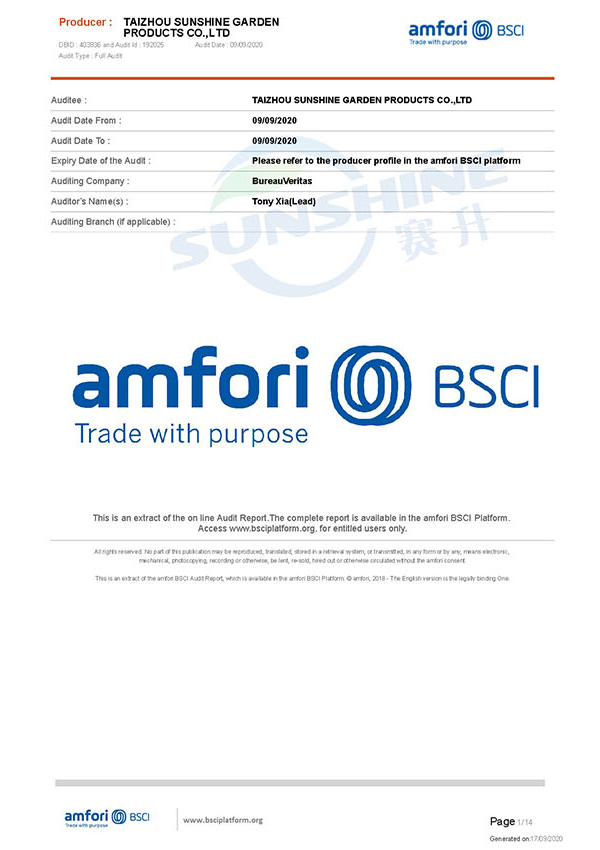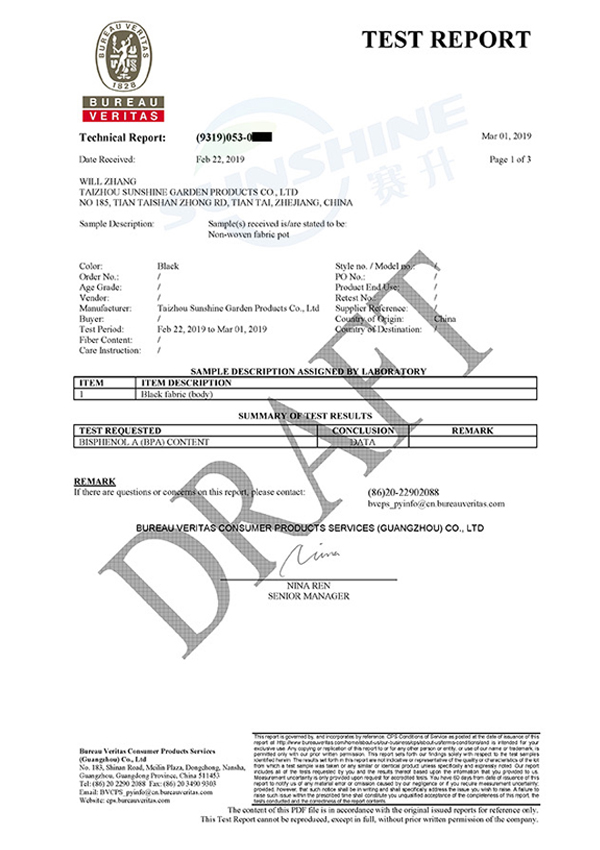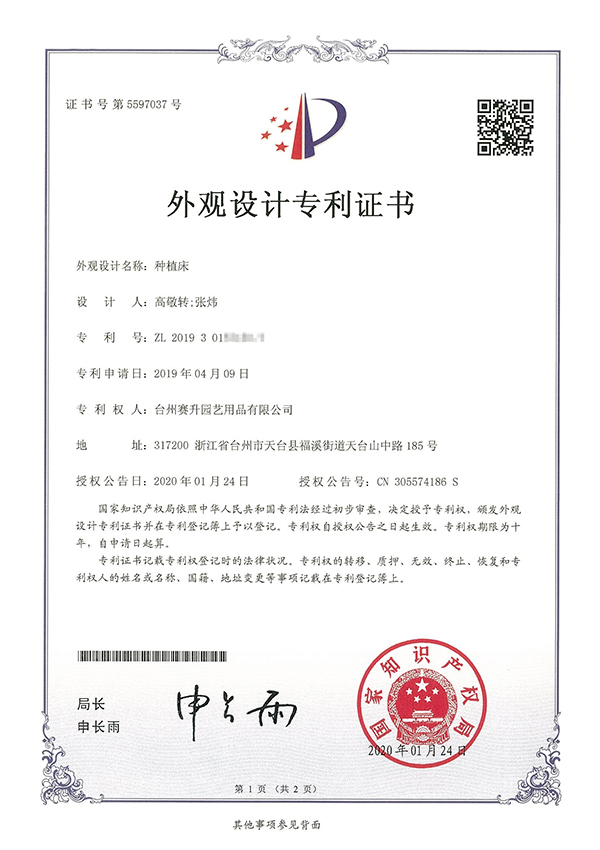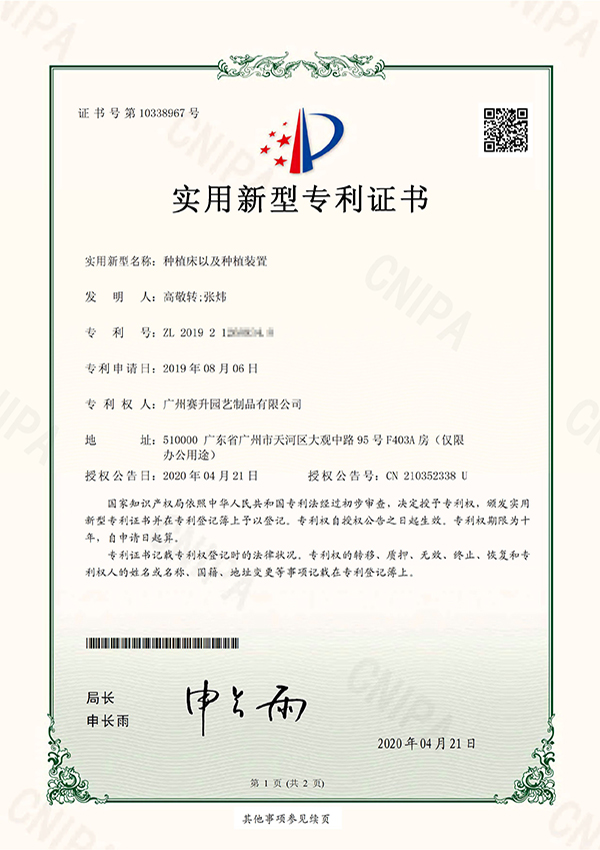Garden Storage with Rack
A garden storage shed with a rack is a fantastic way to organize your tools, pots, and supplies, keeping them protected and your garden tidy.

A garden storage shed with a rack is a fantastic way to organize your tools, pots, and supplies, keeping them protected and your garden tidy.
Our Garden Shed with Rack is perfect for your garden or outdoor space and can store garden tools, lawn care supplies, household items and more.
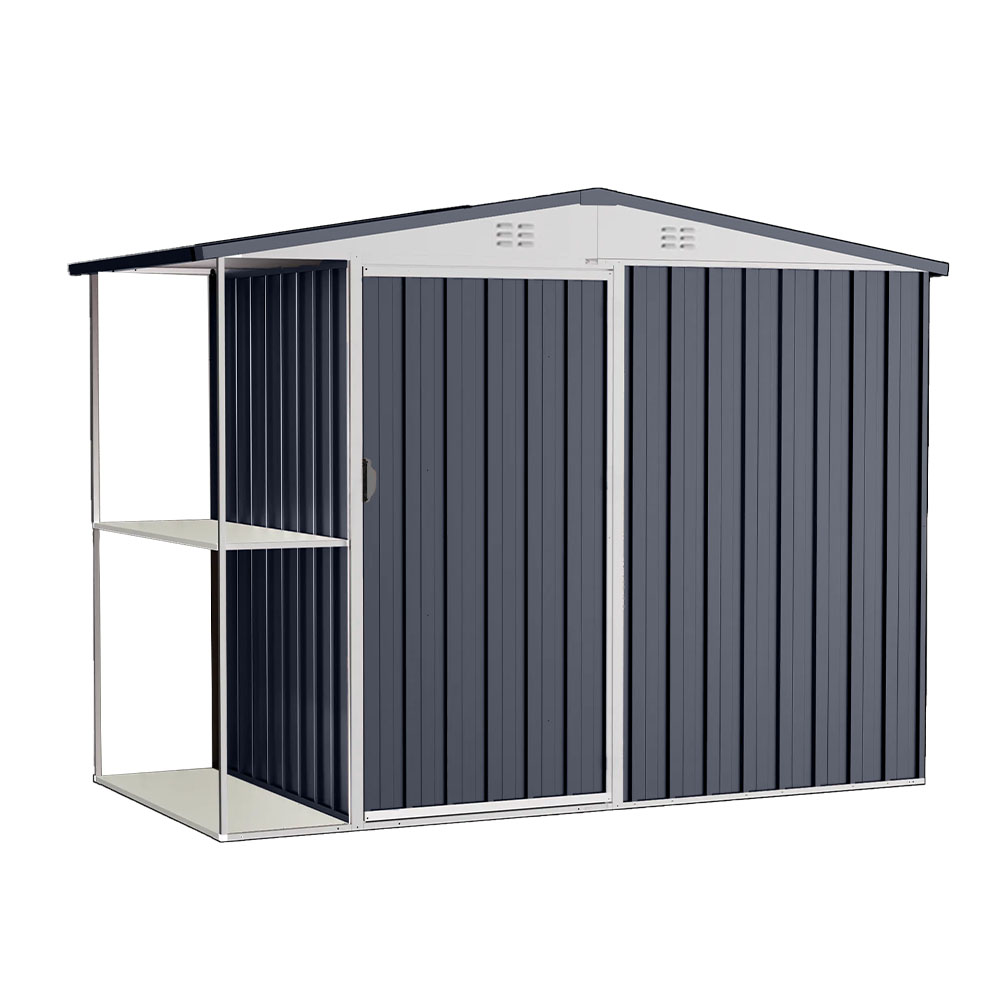
Organizational Tips & Best Practices
Heavy & Low: Store heaviest items (bags of soil, pots) on the bottom shelves or on the floor.
Frequently Used Front & Center: Keep your most-used tools (trowel, gloves, shears) in the most accessible spots.
Secure Chemicals: Use a locked cabinet or a high shelf if children or pets have access to the shed.
Label Everything: Use a label maker or painter's tape to mark bins and boxes. You'll thank yourself later.
Utilize Door Space: The inside of the shed door is perfect for a small pegboard or hooks for very small tools and gloves.
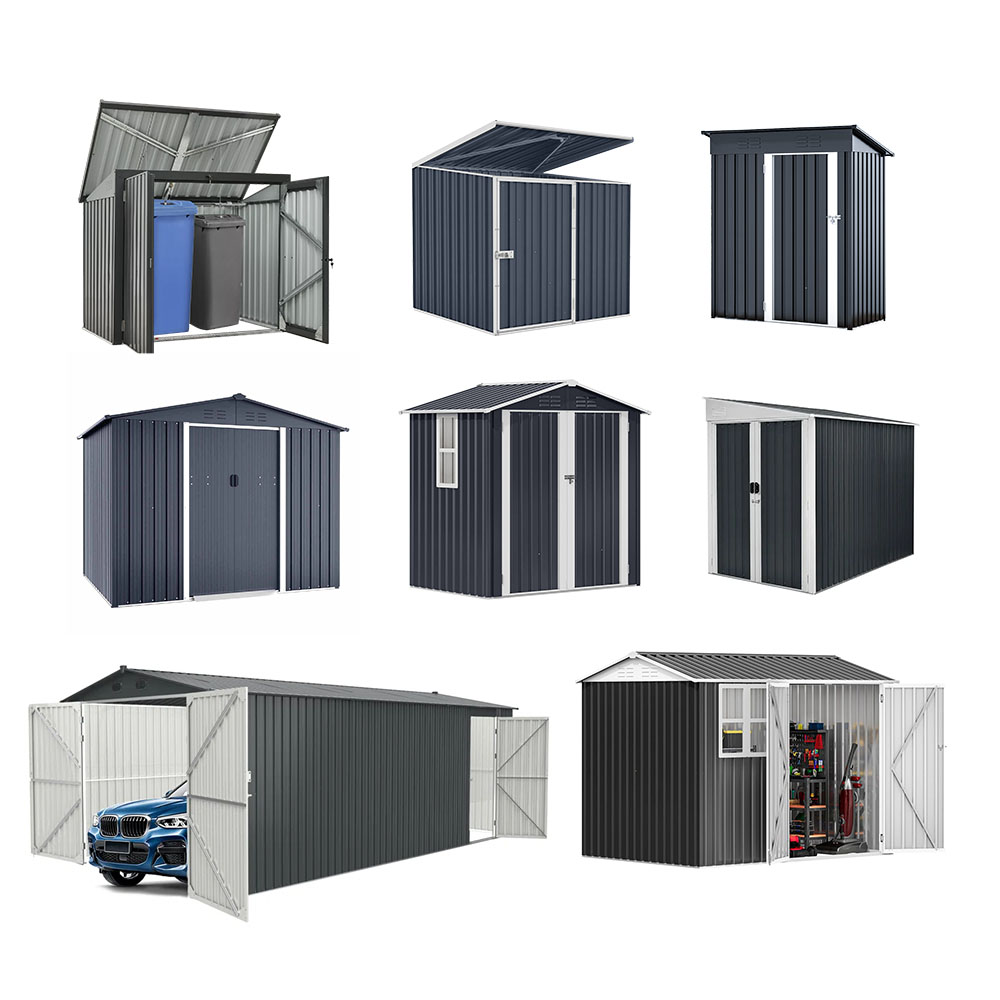
Garden Shed not only protects against dirt and dust, but also protects against wind and weather. This storage house is made of galvanized iron for stability and easy maintenance.
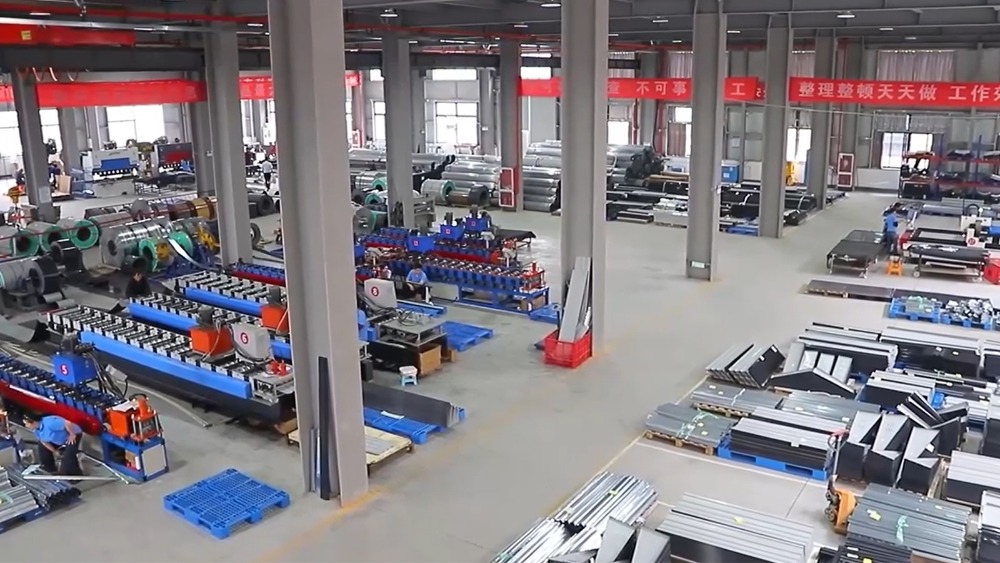
Sunshine Garden is a manufacturer based in China with 14 years of experience in OEM & ODM Manufacturing and developing, specialist for Home Garden living solutions.
Offers everything you need to build complete gardening and hydroponic systems.
.jpg) Rolling Benches are widely used in workshops, laboratories, and industrial settings due to their mobility and versatility. While they offer convenience, a critical consideration is whether the bench remains stable under load and during operational use. Excessive wobbling or structural deformation can compromise both safety and work efficiency. Evaluating the factors that influence stability, including material strength, frame design, and load distribution, is essential for ensuring reliable performance in demanding work environments.
Material and Frame Strength
The stability of a rolling bench primarily depends on the materials used in its construction and the rigidity of its frame. Heavy-duty steel frames offer high tensile strength and resistance to bending under significant loads. Aluminum frames, while lighter, require reinforced design elements to prevent flexing. The choice of tabletop material also affects overall stiffness; thick wooden or composite surfaces distribute weight evenly and resist sagging, while thinner or low-density materials may deform under repeated stress. A combination of strong framing and robust surface material is critical to prevent wobbling and maintain a level work surface during heavy-duty operations.
Impact of Load Distribution
The weight applied to the rolling bench significantly affects its stability. Concentrated loads in one area can create torque or bending moments that cause temporary deformation or wobbling. Evenly distributed loads reduce stress on individual components and maintain balance, while uneven placement of heavy tools or equipment may cause tilting or flexing. Design features such as crossbars, reinforced legs, and strategically placed supports help distribute weight more uniformly and decrease the risk of structural instability under typical working conditions.
Role of Wheels and Mobility Mechanisms
The mobility aspect of rolling benches introduces unique stability considerations. High-quality locking casters or wheel brakes are essential to prevent unwanted movement during operation. Poorly designed wheels or those without secure locking mechanisms can allow the bench to shift when pressure is applied, causing wobbling and potential accidents. Additionally, the wheelbase width and placement influence how the bench responds to dynamic forces; a wider base generally improves lateral stability, reducing the likelihood of tipping under heavy loads.
Design Strategies to Reduce Deformation
Preventing structural deformation requires careful design of both the tabletop and frame. Reinforcements such as ribbing, braces, and crossbars strengthen critical load-bearing areas, while thick, high-density tabletops resist sagging over time. Adjustable leveling feet can also be incorporated to compensate for uneven flooring, ensuring consistent stability during use. A well-engineered rolling bench balances mobility with rigidity, allowing for heavy-duty operation without compromising safety or precision.
Maintenance and Longevity
Even the well-designed rolling bench can develop wobbles or deformations if not properly maintained. Regular inspection of frame joints, fasteners, and locking mechanisms ensures that all components remain tight and aligned. Cleaning and lubricating wheels prevents uneven movement, while checking for cracks or warping in the tabletop helps detect early signs of deformation. Proactive maintenance extends the operational lifespan of the bench and maintains reliable performance during daily tasks.
The stability and deformation resistance of a rolling bench are influenced by material selection, frame design, load distribution, and wheel quality. Proper engineering and maintenance ensure that the bench remains stable under heavy loads and during routine operations. By focusing on these factors, manufacturers and users can achieve a durable, safe, and efficient mobile workstation that withstands the demands of industrial, laboratory, or workshop environments.
Rolling Benches are widely used in workshops, laboratories, and industrial settings due to their mobility and versatility. While they offer convenience, a critical consideration is whether the bench remains stable under load and during operational use. Excessive wobbling or structural deformation can compromise both safety and work efficiency. Evaluating the factors that influence stability, including material strength, frame design, and load distribution, is essential for ensuring reliable performance in demanding work environments.
Material and Frame Strength
The stability of a rolling bench primarily depends on the materials used in its construction and the rigidity of its frame. Heavy-duty steel frames offer high tensile strength and resistance to bending under significant loads. Aluminum frames, while lighter, require reinforced design elements to prevent flexing. The choice of tabletop material also affects overall stiffness; thick wooden or composite surfaces distribute weight evenly and resist sagging, while thinner or low-density materials may deform under repeated stress. A combination of strong framing and robust surface material is critical to prevent wobbling and maintain a level work surface during heavy-duty operations.
Impact of Load Distribution
The weight applied to the rolling bench significantly affects its stability. Concentrated loads in one area can create torque or bending moments that cause temporary deformation or wobbling. Evenly distributed loads reduce stress on individual components and maintain balance, while uneven placement of heavy tools or equipment may cause tilting or flexing. Design features such as crossbars, reinforced legs, and strategically placed supports help distribute weight more uniformly and decrease the risk of structural instability under typical working conditions.
Role of Wheels and Mobility Mechanisms
The mobility aspect of rolling benches introduces unique stability considerations. High-quality locking casters or wheel brakes are essential to prevent unwanted movement during operation. Poorly designed wheels or those without secure locking mechanisms can allow the bench to shift when pressure is applied, causing wobbling and potential accidents. Additionally, the wheelbase width and placement influence how the bench responds to dynamic forces; a wider base generally improves lateral stability, reducing the likelihood of tipping under heavy loads.
Design Strategies to Reduce Deformation
Preventing structural deformation requires careful design of both the tabletop and frame. Reinforcements such as ribbing, braces, and crossbars strengthen critical load-bearing areas, while thick, high-density tabletops resist sagging over time. Adjustable leveling feet can also be incorporated to compensate for uneven flooring, ensuring consistent stability during use. A well-engineered rolling bench balances mobility with rigidity, allowing for heavy-duty operation without compromising safety or precision.
Maintenance and Longevity
Even the well-designed rolling bench can develop wobbles or deformations if not properly maintained. Regular inspection of frame joints, fasteners, and locking mechanisms ensures that all components remain tight and aligned. Cleaning and lubricating wheels prevents uneven movement, while checking for cracks or warping in the tabletop helps detect early signs of deformation. Proactive maintenance extends the operational lifespan of the bench and maintains reliable performance during daily tasks.
The stability and deformation resistance of a rolling bench are influenced by material selection, frame design, load distribution, and wheel quality. Proper engineering and maintenance ensure that the bench remains stable under heavy loads and during routine operations. By focusing on these factors, manufacturers and users can achieve a durable, safe, and efficient mobile workstation that withstands the demands of industrial, laboratory, or workshop environments.
.jpg) Rolling Benches are essential tools in workshops, laboratories, and manufacturing environments, providing a stable surface for assembly, maintenance, or testing tasks. The efficiency and longevity of these benches are directly influenced by the choice of materials and the thickness of the tabletop. Selecting appropriate materials and determining suitable thickness can enhance productivity, reduce maintenance costs, and extend the operational life of the bench. Understanding these factors is critical for both designers and end-users seeking reliable and high-performing workstations.
Impact of Material Selection on Durability
The material used for a bench surface significantly affects its durability and resistance to wear. Common materials include hardwood, medium-density fiberboard (MDF), stainless steel, and laminated composites. Hardwood and MDF provide good shock absorption, making them suitable for delicate tasks, but they may be prone to scratches or moisture damage if not properly treated. Metal surfaces, particularly stainless steel, offer good durability, resistance to impact, and long-term stability under heavy loads. Laminated composites combine the advantages of both wood and metal, offering a balance between toughness, resistance to chemicals, and surface smoothness. The material choice ultimately determines how well the bench can withstand repetitive use, heavy tools, and environmental stressors.
Influence of Thickness on Work Efficiency
Tabletop thickness is another critical factor that impacts both stability and performance. Thicker surfaces can support heavier equipment without bending or warping, ensuring a reliable workspace during complex tasks. Adequate thickness reduces vibrations and provides a firm base, particularly when precision work or machinery is involved. Conversely, thinner surfaces may reduce overall bench weight and improve mobility, but they risk deformation under heavy loads, which can compromise efficiency and safety. Therefore, selecting an appropriate thickness is a balance between durability, weight, and the specific requirements of the intended tasks.
Effect on Load Distribution and Vibration
Material and thickness also influence how a bench distributes weight and absorbs vibrations. Dense, thick surfaces provide better load distribution, preventing localized stress points that could cause cracks or structural fatigue. This ensures that tools and equipment remain stable, reducing errors and enhancing productivity. Similarly, benches with inadequate thickness or low-density materials may flex under load, creating instability that hinders work precision and increases the risk of accidents. A well-chosen combination of strong material and proper thickness contributes to a safer and more efficient working environment.
Maintenance and Longevity Considerations
Durable materials and sufficient thickness reduce the frequency of repairs and maintenance. Metal or treated composite surfaces are easier to clean, resist corrosion, and maintain their flatness over time, while untreated wooden benches may require periodic sanding or sealing. Investing in high-quality materials and thickness not only improves immediate work efficiency but also ensures that the Rolling Bench remains functional and reliable for years, reducing downtime and replacement costs.
The material and thickness of a Rolling Bench directly influence its durability, stability, and overall efficiency. Selecting strong, resilient materials and ensuring adequate thickness enhances load-bearing capacity, reduces vibration, and improves precision during work tasks. These factors, combined with proper maintenance, extend the operational life of the bench and provide a safe, productive workspace. By carefully considering material properties and tabletop thickness, users and manufacturers can optimize performance and ensure the bench meets the demands of various industrial and workshop environments.
Rolling Benches are essential tools in workshops, laboratories, and manufacturing environments, providing a stable surface for assembly, maintenance, or testing tasks. The efficiency and longevity of these benches are directly influenced by the choice of materials and the thickness of the tabletop. Selecting appropriate materials and determining suitable thickness can enhance productivity, reduce maintenance costs, and extend the operational life of the bench. Understanding these factors is critical for both designers and end-users seeking reliable and high-performing workstations.
Impact of Material Selection on Durability
The material used for a bench surface significantly affects its durability and resistance to wear. Common materials include hardwood, medium-density fiberboard (MDF), stainless steel, and laminated composites. Hardwood and MDF provide good shock absorption, making them suitable for delicate tasks, but they may be prone to scratches or moisture damage if not properly treated. Metal surfaces, particularly stainless steel, offer good durability, resistance to impact, and long-term stability under heavy loads. Laminated composites combine the advantages of both wood and metal, offering a balance between toughness, resistance to chemicals, and surface smoothness. The material choice ultimately determines how well the bench can withstand repetitive use, heavy tools, and environmental stressors.
Influence of Thickness on Work Efficiency
Tabletop thickness is another critical factor that impacts both stability and performance. Thicker surfaces can support heavier equipment without bending or warping, ensuring a reliable workspace during complex tasks. Adequate thickness reduces vibrations and provides a firm base, particularly when precision work or machinery is involved. Conversely, thinner surfaces may reduce overall bench weight and improve mobility, but they risk deformation under heavy loads, which can compromise efficiency and safety. Therefore, selecting an appropriate thickness is a balance between durability, weight, and the specific requirements of the intended tasks.
Effect on Load Distribution and Vibration
Material and thickness also influence how a bench distributes weight and absorbs vibrations. Dense, thick surfaces provide better load distribution, preventing localized stress points that could cause cracks or structural fatigue. This ensures that tools and equipment remain stable, reducing errors and enhancing productivity. Similarly, benches with inadequate thickness or low-density materials may flex under load, creating instability that hinders work precision and increases the risk of accidents. A well-chosen combination of strong material and proper thickness contributes to a safer and more efficient working environment.
Maintenance and Longevity Considerations
Durable materials and sufficient thickness reduce the frequency of repairs and maintenance. Metal or treated composite surfaces are easier to clean, resist corrosion, and maintain their flatness over time, while untreated wooden benches may require periodic sanding or sealing. Investing in high-quality materials and thickness not only improves immediate work efficiency but also ensures that the Rolling Bench remains functional and reliable for years, reducing downtime and replacement costs.
The material and thickness of a Rolling Bench directly influence its durability, stability, and overall efficiency. Selecting strong, resilient materials and ensuring adequate thickness enhances load-bearing capacity, reduces vibration, and improves precision during work tasks. These factors, combined with proper maintenance, extend the operational life of the bench and provide a safe, productive workspace. By carefully considering material properties and tabletop thickness, users and manufacturers can optimize performance and ensure the bench meets the demands of various industrial and workshop environments.
.jpg) CMH Sodium Light has become increasingly popular in horticultural, commercial, and industrial applications due to its energy efficiency, full-spectrum output, and long operational life. One critical aspect of its performance is the stability of light output after startup. Unlike some traditional lighting technologies that experience significant fluctuations or require extended warm-up periods, CMH lamps are designed to deliver consistent illumination quickly. Understanding the factors that affect post-startup light stability is essential for users aiming to optimize energy use, maintain visual quality, and ensure predictable lighting conditions.
Startup Characteristics and Warm-Up Phase
After switching on a CMH Sodium Light, the lamp goes through a brief warm-up period. During this time, the ceramic arc tube reaches its suitable operating temperature, allowing the full spectrum of light to stabilize. This phase is typically much shorter than that of traditional high-pressure sodium lamps, which can require several minutes to achieve steady output. The rapid stabilization of CMH lamps ensures disruption in applications where immediate, consistent illumination is required, such as in indoor horticulture or precision industrial tasks.
Spectral and Luminous Stability
The ceramic metal halide technology used in CMH Sodium Light allows for stable spectral and luminous output once the lamp reaches its operating temperature. The ceramic arc tube maintains a consistent chemical composition, which reduces fluctuations in color temperature and overall brightness. This stability is particularly advantageous in environments where color accuracy is important, such as retail lighting or plant growth facilities, as it ensures predictable visual and physiological responses to the light.
Impact of Electrical Supply and Ballast
Electrical stability plays a significant role in post-startup light output. CMH Sodium Light systems rely on compatible electronic or magnetic ballasts to regulate current and voltage. A high-quality ballast maintains consistent electrical input, preventing flickering, dimming, or uneven light distribution. In contrast, incompatible or low-quality ballasts can cause fluctuations in both intensity and spectral quality, potentially impacting both energy efficiency and visual performance. Proper installation and maintenance of the electrical components are therefore crucial for achieving stable illumination.
Temperature and Environmental Factors
Ambient temperature and environmental conditions can influence light stability. CMH Sodium Light is generally tolerant of moderate temperature variations, but heat or cold can temporarily affect luminous output until the lamp stabilizes. Ventilation and heat dissipation around the fixture help maintain consistent operating conditions, reducing the likelihood of short-term fluctuations. This makes CMH lamps suitable for both controlled indoor environments and more variable industrial settings.
Maintenance and Long-Term Stability
Regular maintenance also contributes to stable light output over the lifetime of the lamp. Dust accumulation on reflectors or lamp surfaces can reduce luminous efficiency, while aging components may gradually decrease overall brightness. Periodic cleaning, inspection, and replacement of worn parts ensure that the CMH Sodium Light continues to provide reliable, steady illumination. Compared to traditional high-pressure sodium lamps, CMH systems generally experience slower lumen depreciation, further supporting long-term stability.
Reliable Post-Startup Performance of CMH Lamps
CMH Sodium Light delivers rapid and stable light output following startup, thanks to its ceramic arc tube technology, compatible ballasts, and efficient thermal management. Minimal warm-up time, consistent spectral output, and resistance to environmental fluctuations make it a reliable choice for applications requiring predictable illumination. By maintaining proper electrical supply, environmental control, and routine maintenance, users can ensure that CMH lighting systems provide steady, high-quality illumination throughout their operational life. This stability enhances both energy efficiency and practical usability in diverse lighting scenarios.
CMH Sodium Light has become increasingly popular in horticultural, commercial, and industrial applications due to its energy efficiency, full-spectrum output, and long operational life. One critical aspect of its performance is the stability of light output after startup. Unlike some traditional lighting technologies that experience significant fluctuations or require extended warm-up periods, CMH lamps are designed to deliver consistent illumination quickly. Understanding the factors that affect post-startup light stability is essential for users aiming to optimize energy use, maintain visual quality, and ensure predictable lighting conditions.
Startup Characteristics and Warm-Up Phase
After switching on a CMH Sodium Light, the lamp goes through a brief warm-up period. During this time, the ceramic arc tube reaches its suitable operating temperature, allowing the full spectrum of light to stabilize. This phase is typically much shorter than that of traditional high-pressure sodium lamps, which can require several minutes to achieve steady output. The rapid stabilization of CMH lamps ensures disruption in applications where immediate, consistent illumination is required, such as in indoor horticulture or precision industrial tasks.
Spectral and Luminous Stability
The ceramic metal halide technology used in CMH Sodium Light allows for stable spectral and luminous output once the lamp reaches its operating temperature. The ceramic arc tube maintains a consistent chemical composition, which reduces fluctuations in color temperature and overall brightness. This stability is particularly advantageous in environments where color accuracy is important, such as retail lighting or plant growth facilities, as it ensures predictable visual and physiological responses to the light.
Impact of Electrical Supply and Ballast
Electrical stability plays a significant role in post-startup light output. CMH Sodium Light systems rely on compatible electronic or magnetic ballasts to regulate current and voltage. A high-quality ballast maintains consistent electrical input, preventing flickering, dimming, or uneven light distribution. In contrast, incompatible or low-quality ballasts can cause fluctuations in both intensity and spectral quality, potentially impacting both energy efficiency and visual performance. Proper installation and maintenance of the electrical components are therefore crucial for achieving stable illumination.
Temperature and Environmental Factors
Ambient temperature and environmental conditions can influence light stability. CMH Sodium Light is generally tolerant of moderate temperature variations, but heat or cold can temporarily affect luminous output until the lamp stabilizes. Ventilation and heat dissipation around the fixture help maintain consistent operating conditions, reducing the likelihood of short-term fluctuations. This makes CMH lamps suitable for both controlled indoor environments and more variable industrial settings.
Maintenance and Long-Term Stability
Regular maintenance also contributes to stable light output over the lifetime of the lamp. Dust accumulation on reflectors or lamp surfaces can reduce luminous efficiency, while aging components may gradually decrease overall brightness. Periodic cleaning, inspection, and replacement of worn parts ensure that the CMH Sodium Light continues to provide reliable, steady illumination. Compared to traditional high-pressure sodium lamps, CMH systems generally experience slower lumen depreciation, further supporting long-term stability.
Reliable Post-Startup Performance of CMH Lamps
CMH Sodium Light delivers rapid and stable light output following startup, thanks to its ceramic arc tube technology, compatible ballasts, and efficient thermal management. Minimal warm-up time, consistent spectral output, and resistance to environmental fluctuations make it a reliable choice for applications requiring predictable illumination. By maintaining proper electrical supply, environmental control, and routine maintenance, users can ensure that CMH lighting systems provide steady, high-quality illumination throughout their operational life. This stability enhances both energy efficiency and practical usability in diverse lighting scenarios.
.png) CMH Sodium Light has emerged as a popular alternative to traditional high-pressure sodium (HPS) lamps, particularly in horticultural, commercial, and industrial lighting applications. One of the frequently discussed aspects is its luminous efficiency, which determines how effectively electrical energy is converted into usable light. Comparing CMH Sodium Light with traditional high-pressure sodium lamps helps users understand energy consumption, light quality, and operational performance, which are critical factors when selecting the suitable lighting technology.
Luminous Efficacy and Energy Conversion
CMH Sodium Light generally offers higher luminous efficacy than traditional HPS lamps. This means that for the same amount of electrical power consumed, CMH lamps produce more lumens of visible light. Improved efficacy results from advances in arc tube technology and the combination of ceramic metal halide materials with sodium. In contrast, HPS lamps, while efficient in producing high lumen output, tend to emit light with a narrow spectral distribution, primarily in yellow and red wavelengths, which can be less useful in applications requiring full-spectrum lighting.
Color Rendering and Light Quality
A significant advantage of CMH Sodium Light over traditional HPS lamps is its good color rendering. The ceramic arc tube enables a broader spectrum of visible light, producing more natural and balanced illumination. Traditional high-pressure sodium lamps often suffer from low color rendering indices, causing a yellow-orange light that can distort colors and reduce visual clarity. In settings such as retail stores, offices, or indoor horticulture, the enhanced color quality of CMH lighting can improve both aesthetics and plant growth outcomes, demonstrating a practical advantage over conventional HPS lighting.
Operational Efficiency and Longevity
Beyond luminous efficacy, operational efficiency includes factors such as startup time, stability, and lifespan. CMH Sodium Light generally has a stable arc and maintains light output more consistently over its lifetime, while traditional HPS lamps may experience significant lumen depreciation over time. Additionally, CMH lamps can start and restart more efficiently under varying temperature conditions, whereas HPS lamps often require longer warm-up periods and exhibit slower recovery after power interruptions. This operational stability further contributes to the overall energy efficiency of CMH lighting systems.
Heat Management and Environmental Considerations
Heat production also affects perceived efficiency. CMH Sodium Light typically operates at slightly lower temperatures than HPS lamps for comparable light output, reducing thermal stress on fixtures and surrounding materials. This can lower the need for additional cooling systems, indirectly saving energy. Furthermore, the broader light spectrum of CMH lamps can reduce the need for supplementary lighting, enhancing both efficiency and environmental sustainability.
Cost Versus Performance
While CMH Sodium Light may involve a higher initial investment compared to traditional HPS lamps, the long-term benefits in luminous efficacy, color rendering, and operational stability often justify the cost. Reduced energy consumption, longer service life, and improved light quality contribute to a favorable total cost of ownership, particularly in applications with continuous or high-intensity usage.
Advantages of CMH Lighting over HPS Systems
CMH Sodium Light demonstrates good light efficiency, color rendering, and operational stability compared to traditional high-pressure sodium lamps. Its ability to produce more usable lumens per watt, combined with a broader spectral output and more consistent light over time, makes it an attractive choice for both commercial and horticultural applications. Considering energy savings, visual quality, and long-term performance, CMH lighting provides a technologically advanced alternative to conventional HPS systems, offering enhanced efficiency and practical benefits for a variety of lighting scenarios.
CMH Sodium Light has emerged as a popular alternative to traditional high-pressure sodium (HPS) lamps, particularly in horticultural, commercial, and industrial lighting applications. One of the frequently discussed aspects is its luminous efficiency, which determines how effectively electrical energy is converted into usable light. Comparing CMH Sodium Light with traditional high-pressure sodium lamps helps users understand energy consumption, light quality, and operational performance, which are critical factors when selecting the suitable lighting technology.
Luminous Efficacy and Energy Conversion
CMH Sodium Light generally offers higher luminous efficacy than traditional HPS lamps. This means that for the same amount of electrical power consumed, CMH lamps produce more lumens of visible light. Improved efficacy results from advances in arc tube technology and the combination of ceramic metal halide materials with sodium. In contrast, HPS lamps, while efficient in producing high lumen output, tend to emit light with a narrow spectral distribution, primarily in yellow and red wavelengths, which can be less useful in applications requiring full-spectrum lighting.
Color Rendering and Light Quality
A significant advantage of CMH Sodium Light over traditional HPS lamps is its good color rendering. The ceramic arc tube enables a broader spectrum of visible light, producing more natural and balanced illumination. Traditional high-pressure sodium lamps often suffer from low color rendering indices, causing a yellow-orange light that can distort colors and reduce visual clarity. In settings such as retail stores, offices, or indoor horticulture, the enhanced color quality of CMH lighting can improve both aesthetics and plant growth outcomes, demonstrating a practical advantage over conventional HPS lighting.
Operational Efficiency and Longevity
Beyond luminous efficacy, operational efficiency includes factors such as startup time, stability, and lifespan. CMH Sodium Light generally has a stable arc and maintains light output more consistently over its lifetime, while traditional HPS lamps may experience significant lumen depreciation over time. Additionally, CMH lamps can start and restart more efficiently under varying temperature conditions, whereas HPS lamps often require longer warm-up periods and exhibit slower recovery after power interruptions. This operational stability further contributes to the overall energy efficiency of CMH lighting systems.
Heat Management and Environmental Considerations
Heat production also affects perceived efficiency. CMH Sodium Light typically operates at slightly lower temperatures than HPS lamps for comparable light output, reducing thermal stress on fixtures and surrounding materials. This can lower the need for additional cooling systems, indirectly saving energy. Furthermore, the broader light spectrum of CMH lamps can reduce the need for supplementary lighting, enhancing both efficiency and environmental sustainability.
Cost Versus Performance
While CMH Sodium Light may involve a higher initial investment compared to traditional HPS lamps, the long-term benefits in luminous efficacy, color rendering, and operational stability often justify the cost. Reduced energy consumption, longer service life, and improved light quality contribute to a favorable total cost of ownership, particularly in applications with continuous or high-intensity usage.
Advantages of CMH Lighting over HPS Systems
CMH Sodium Light demonstrates good light efficiency, color rendering, and operational stability compared to traditional high-pressure sodium lamps. Its ability to produce more usable lumens per watt, combined with a broader spectral output and more consistent light over time, makes it an attractive choice for both commercial and horticultural applications. Considering energy savings, visual quality, and long-term performance, CMH lighting provides a technologically advanced alternative to conventional HPS systems, offering enhanced efficiency and practical benefits for a variety of lighting scenarios.

Sunshine Garden offers great, durable steel sheds to small footprint patio storage, we have a soluti...

Sunshine Garden offers great, durable steel sheds to small footprint patio storage, we have a soluti...

Sunshine Garden offers great, durable steel sheds to small footprint patio storage, we have a soluti...

【6' x 4' large storage shed】72" L x 51"W x 73"H for outdoor shed, with a door size of 32"L x 60"H. T...

Heavy Duty Tool Sheds Storage House Sunshine Garden offers great, durable steel sheds to small foo...

The metal shed can be used as storage for your garden and backyard, which can better store your tool...

Metal Garden Shed for Yard Roof Dimension 247x183x185cm Bottom size 235x170x185cm Door heig...

Garden Storage with Rack A garden storage shed with a rack is a fantastic way to organize your to...


 Innovation Team
Innovation Team Patented Technology
Patented Technology Quality Assurance
Quality Assurance Efficient Response
Efficient Response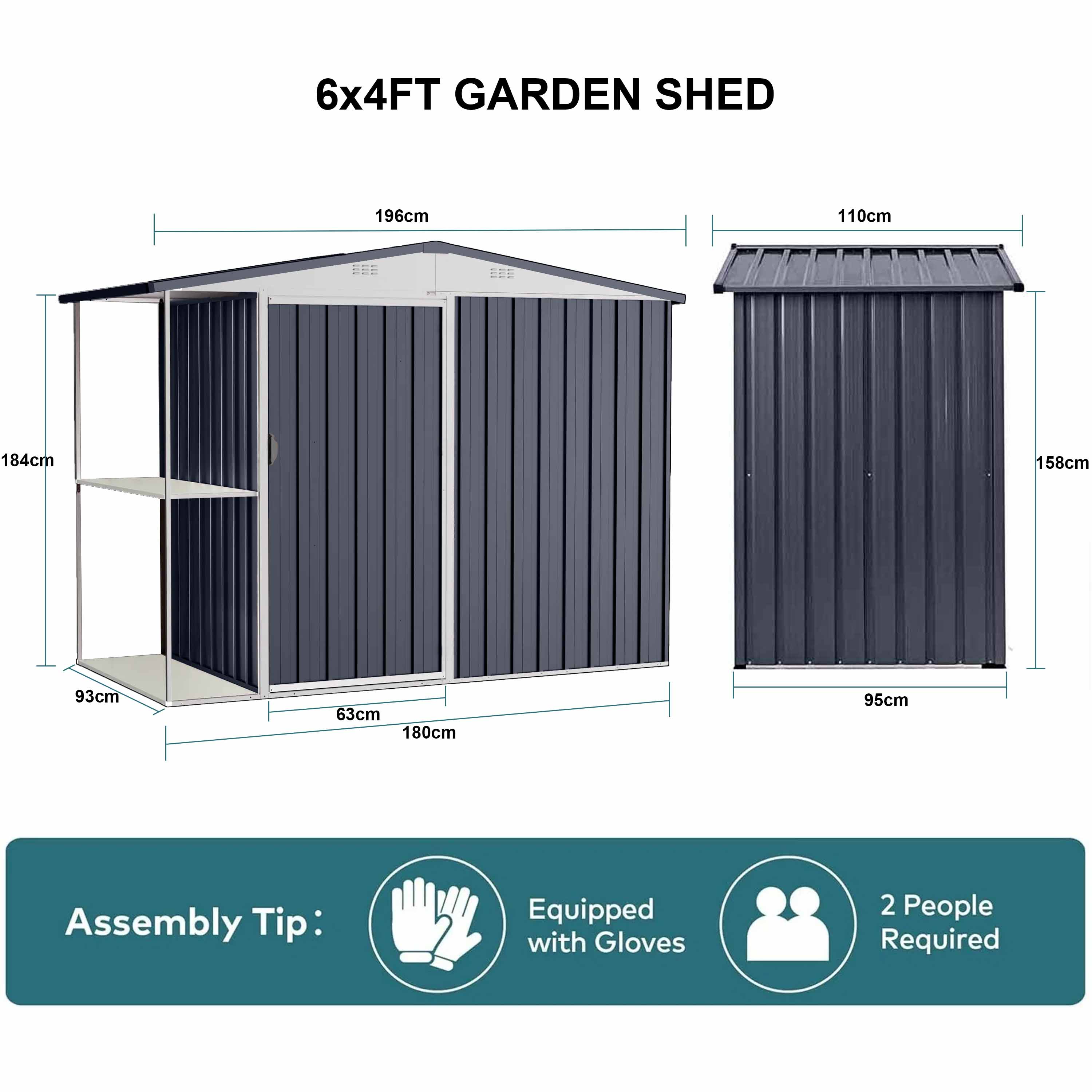
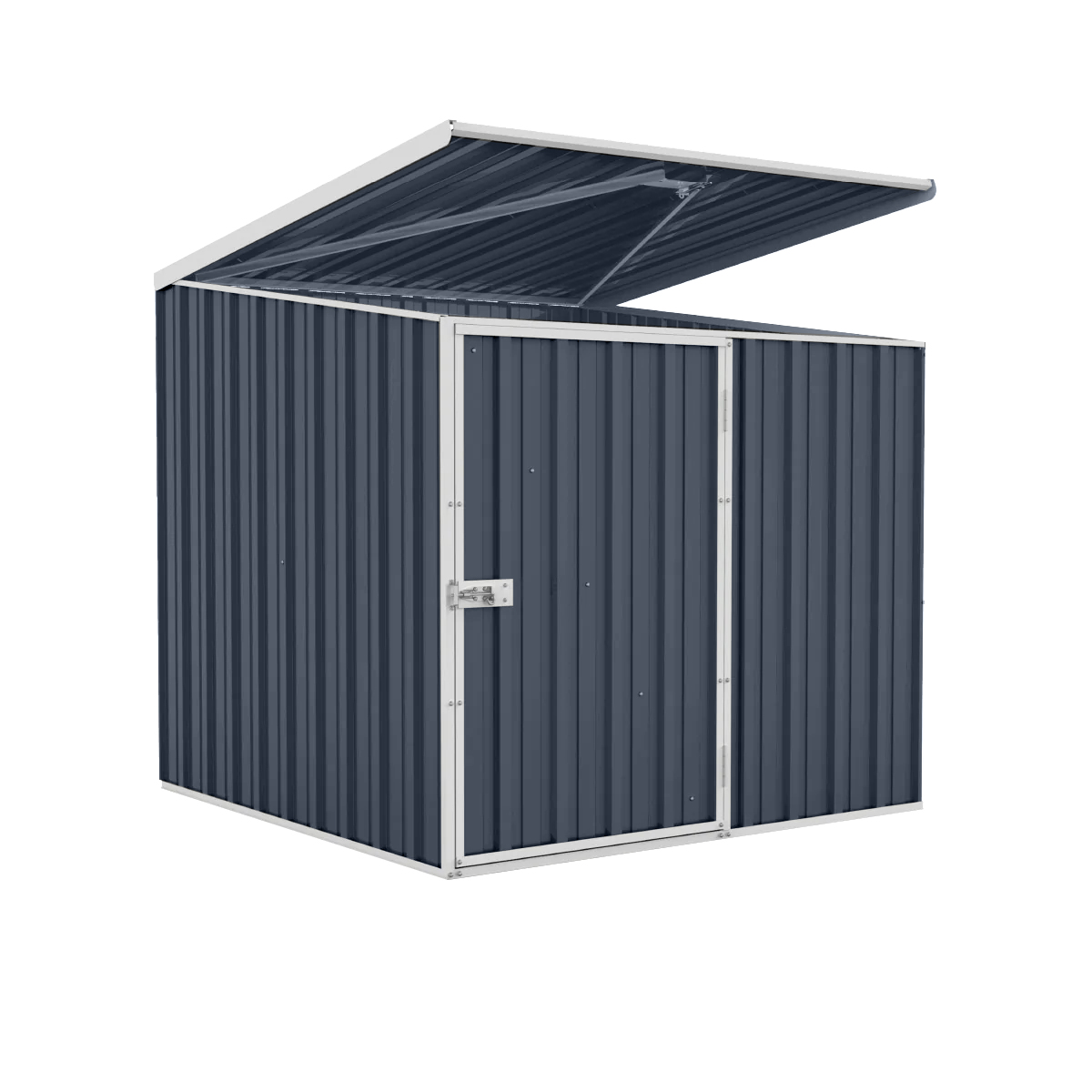
.jpg)
2.jpg)
